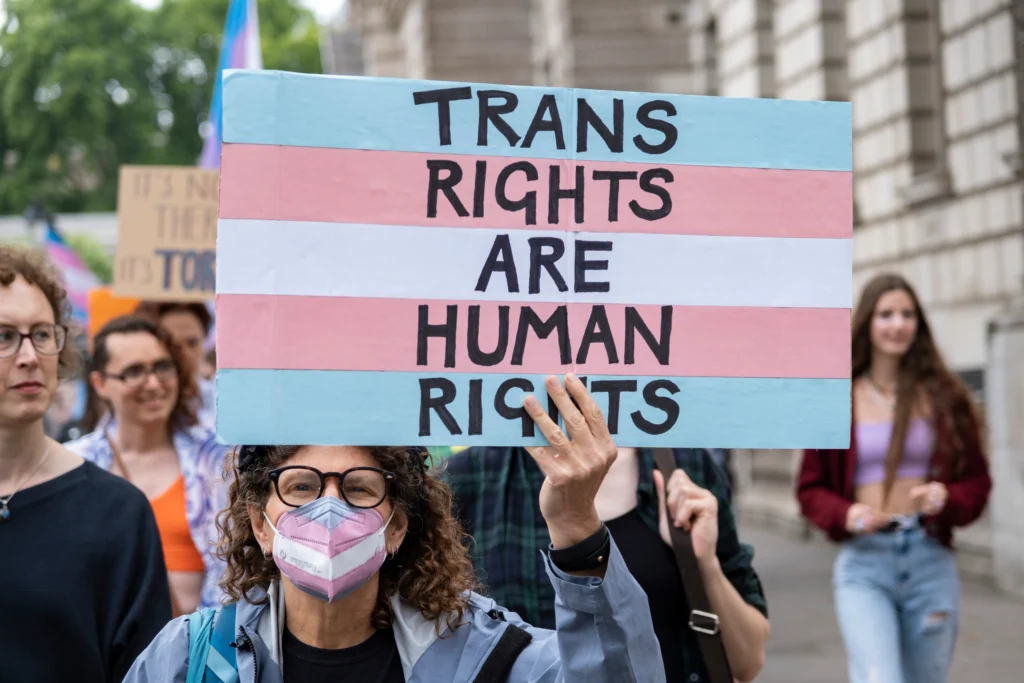In recent years, the conversation surrounding gender identity has undergone profound changes, reflecting broader shifts in societal attitudes and legal standards. This evolving discourse has highlighted the unique challenges and needs of transgender children, who often face significant barriers in environments that should be supportive, such as schools, healthcare settings, and within their own communities.
As society continues to navigate these changes, the importance of safeguarding the rights and well-being of transgender children has never been more critical. This guide aims to explore the essential legal frameworks, social considerations, and best practices that can help protect these vulnerable members of our community.
By delving into current laws, significant court cases, and expert opinions, we will provide a comprehensive resource for educators, healthcare providers, policymakers, and families striving to create inclusive and supportive environments for all children.
Current Landscape and Challenges

Societal Views: Changing Perceptions and Their Impact on Transgender Children
The societal understanding and acceptance of gender identity, particularly regarding transgender individuals, have evolved significantly, although challenges persist. Recent studies highlight a generational divide in perceptions, with younger demographics showing greater acceptance compared to older ones.
A report by the Equality and Human Rights Commission found a broad public consensus against prejudice towards transgender people, with 76% of respondents considering such prejudice as “always or mostly wrong”. Yet, surveys also reveal a declining support for certain transgender rights over recent years, reflecting complex societal dynamics and possibly media influence.
Dr. Hilary Cass’s Independent Review notes an increase in young individuals identifying as transgender or gender diverse, attributed to a mix of biological, psychological, and social factors. This rise is mirrored by changes in the types of cases referred to gender identity services, with more adolescents, particularly those assigned female at birth, seeking support.
Legal Challenges: Navigating the Legal Landscape for Transgender Youth
Transgender youth in the UK face a complex legal environment that affects their access to rights and healthcare. Key legal cases have set important precedents, shaping the policies and legal rights available to these individuals.
The legal terminology often involves understanding specific acts and rights, such as the Equality Act, which mandates non-discrimination on the basis of gender reassignment, among other characteristics.
In healthcare, the controversy around medical treatments for transgender youth, such as puberty blockers and hormone therapies, has spurred legal debates. These treatments, though widely used, are subject to scrutiny regarding their long-term effects and the adequacy of informed consent.
The Cass Review highlights these challenges, stressing the need for a robust evidence base to support medical decisions and ensure that the care provided aligns with broader NHS standards.
Best Practices in Safeguarding Transgender Children

Vocabulary and Communication: Fostering Inclusion through Language
The use of correct pronouns and respectful communication is paramount in creating an inclusive environment, especially for transgender individuals. Recognising and using an individual’s chosen pronouns is not only a matter of respect but also an essential aspect of acknowledging their identity.
Education about gender diversity is equally important, as it helps dismantle stereotypes and misconceptions, fostering a more accepting society. Training programmes and resources should be made available to both staff and students in educational institutions to promote understanding and support for all gender identities.
Such measures not only contribute to the well-being of transgender individuals but also cultivate a broader culture of respect and empathy within the community.
Risk Areas and Safeguards: Addressing Specific Concerns
Safeguarding concerns specific to transgender individuals often arise in areas such as bathroom access and sports participation. These issues require careful management to balance legal obligations, individual rights, and practical considerations.
For bathrooms, the best practice is to provide access to facilities that correspond to an individual’s gender identity, as advocated by equality laws. This approach reduces stigma and promotes safety.
Regarding sports, organisations should adopt inclusive policies that allow transgender individuals to participate in a manner consistent with their gender identity, while also considering competitive fairness and safety.
In both scenarios, it is crucial to involve transgender individuals in the decision-making process to ensure that the solutions implemented are truly inclusive and effective. Additionally, clear anti-bullying policies and regular staff training on diversity and inclusion can help mitigate risks and ensure compliance with legal standards.
Transgender Children’s Managing Conflicts

Between Children and Parents: Navigating Disagreements
Disagreements between children’s expressions of gender identity and parental or caregiver expectations can be sensitive and challenging. It’s crucial to approach these disagreements with empathy and open communication.
Parents and caregivers might benefit from guidance and education to better understand gender identity and the importance of supporting their child’s individuality. Family therapy or counselling can be an effective way to facilitate understanding and communication within the family.
Institutions’ Roles: Balancing Interests and Prioritising Welfare
Schools and healthcare providers play pivotal roles in managing conflicts that arise due to competing interests and pressures regarding a child’s gender identity.
These institutions should adopt clear, inclusive policies that affirm and support the gender identities of all students and patients. This involves training staff to handle sensitive situations tactfully and knowledgeably, ensuring that the child’s welfare is always the priority.
In schools, the implementation of comprehensive anti-bullying policies and the inclusion of gender diversity in the curriculum can help create a more accepting and supportive environment.
Healthcare providers, on the other hand, should offer gender-affirming care that respects the wishes and needs of the child, in line with the best medical practices and ethical standards.
Coordination between educational and medical institutions can further enhance the support system, providing a consistent approach that facilitates the child’s well-being across different environments.
By effectively managing these conflicts and prioritising the child’s best interests, institutions can significantly contribute to the healthy development and emotional well-being of transgender and gender-diverse children.
Resources and Guidance

Legal Framework: Protecting the Rights of Transgender Children in the UK
In the UK, the legal framework that governs the rights of transgender children primarily revolves around the Equality Act 2010. This act prohibits discrimination on the basis of gender reassignment, ensuring protection for transgender children in various areas including education and access to services.
Schools, for example, are required by law to protect children from bullying and discrimination and must have policies in place that include measures for handling complaints of bullying and discrimination.
The Gender Recognition Act 2004 also plays a crucial role, allowing individuals to obtain a Gender Recognition Certificate to legally recognise their gender. However, it is currently applicable only to those over 18. Discussions and consultations have been ongoing about potentially lowering the age limit and simplifying the process through self-identification, although this has been met with both support and controversy.
Support Resources: Organisations and Online Help for Transgender Youth and Their Families
Several organisations offer support and resources tailored to the needs of transgender youth and their families in the UK:
- Pearl Lemon Legal provides robust legal support for transgender individuals, ensuring they receive fair and respectful treatment under the law. Specialising in areas such as discrimination cases, gender recognition, and equality rights, Pearl Lemon Legal advocates for the enforcement of legal protections outlined in the Equality Act 2010 and other relevant statutes.
- Mermaids provide family and individual support for gender-diverse and transgender children and young people.
- Gendered Intelligence offers support for young trans people between the ages of 8 and 25, focusing on improving the quality of life of young trans people.
These resources provide crucial support, helping to navigate the legal, social, and personal challenges that may arise for transgender youth and their families. By leveraging these supports, families and youth can better manage the complexities associated with gender identity in a way that promotes understanding and acceptance.
Case Studies and Expert Opinions
Real-Life Examples: Illustrating the Impact
Case studies provide powerful insights into the real-world implications of policies and practices surrounding transgender rights. For instance, the case of Alex, a transgender teenager who faced challenges in accessing gender-affirming healthcare, highlights the obstacles posed by lengthy waiting lists and stringent medical requirements. Alex’s experience underscores the importance of timely medical intervention in mitigating the psychological distress often associated with gender dysphoria.
Expert Contributions: Enhancing Understanding Through Diverse Perspectives
Engaging with experts through interviews or panel discussions can significantly enrich the dialogue surrounding transgender issues. For instance, discussions with psychologists like Dr. Samantha Rennolls, who specialises in gender identity, can provide deeper insight into the psychological impacts of societal acceptance on transgender individuals.
Legal experts at Pearl Lemon Legal offer perspectives on recent legal developments and their implications for rights and protections. Additionally, insights from activists within the transgender community, such as Jamie Windust, add a personal and grassroots level understanding to the conversation, highlighting ongoing challenges and areas for improvement.
These expert contributions not only broaden the understanding of the issues at hand but also help in shaping more informed, inclusive, and effective policies and practices.
Final Step Regard Safeguarding Transgender Children

Summary: Ensuring Effective Safeguarding
This discussion underscores the critical need for effectively safeguarding transgender children. From legal frameworks like the Equality Act 2010 to real-world challenges illustrated through case studies, the importance of creating a supportive and inclusive environment is clear.
Pearl Lemon Legal plays a vital role in advocating for and protecting the rights of transgender individuals, ensuring they receive fair treatment and access to necessary resources.






